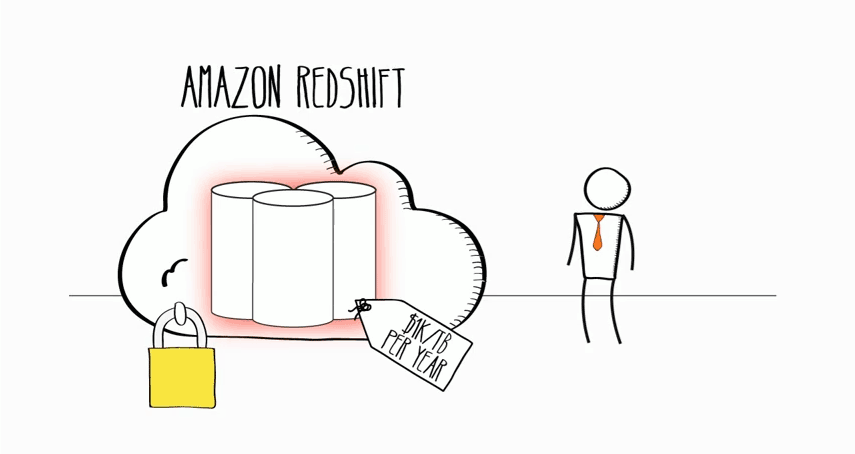Amazon Redshift is a fully managed data warehouse launched by Amazon in October 2012.
According to Amazon Web Services, Redshift offers ten times faster performance than other data warehouses by using machine learning, massively parallel query execution, and columnar storage.
The high-performance, petabyte-scale data warehouse service is designed to store and analyze large volume of datasets in the cloud.
Amazon RedShift utilizes three technologies, Machine learning , massively parallel processing (data warehouse architecture
By offering Redshift on a pay-as-go basis, Amazon cuts through the need for the high upfront costs companies would have needed had they built such an infrastructure on their own.
AWS Redshift: Key Features
-
Redshift uses result caching to increase response times for repeat queries.
-
By automating administrative tasks such as setup, scaling, managing, and maintenance, Redshift makes it easier to manage large data warehouses.
-
Redshift automatically provisions infrastructure for deployments while continuously backing up data to Amazon S3. This reduces deployment time and labor hours.
-
Monitors nodes and drives to help recover from failures.
-
Since Redshift is a cloud-based service, scaling up or down can be done with a few clicks or through a simple API call.
-
Redshift Spectrum reduces processing time as it enables users to run queries against a dataset without having to load or transform the data.
-
Spectrum also provides limitless concurrency, which means you can run multiple queries on the same dataset.
-
Offers end to end encryption. Redshift uses SSL to secure data in transit, and hardware-accelerated AES-256 encryption for data at rest.
AWS Redshift Pricing:
Amazon charges customers only for the resources they
Redshift billing will depend primarily on Compute node hours (the total number of hours you run across all your compute nodes), Backup Storage (billed only when storage goes beyond the provisioned storage size), Data transfer and Data scanned
Amazon Redshift On-Demand pricing allows you to pay for capacity by the hour with no commitments and no upfront costs – you simply pay an hourly rate based on the type and number of nodes in your cluster.
This frees you from planning and purchasing data warehouse capacity ahead of your needs, and enables you to cost-effectively spin up and tear down environments for development or test purposes. – AWS
For more detailed information on AWS Redshift Pricing please visit Amazon
Amazon Redshift: Alternative
Oracle’s Autonomous Data Warehouse is the best alternative for Amazon Redshift.
According to Oracle, “Oracle Autonomous Data Warehouse processes data 8 – 14 times faster than AWS Redshift. In addition, Autonomous Data Warehouse Cloud costs 5 to 8x less than AWS Redshift. Oracle performs in an hour what Redshift does in 10 hours.”
Both companies claim that their cloud data warehouse is faster and better than the other one, which makes it harder to believe one over the other. We will update this section once we get our hands on a head to head comparison done by a neutral third party IT service.
Redshift: Industry Reports and Reviews
With more than 6,500 deployments, Amazon Redshift has the largest CDW deployments, and its momentum remains strong. Amazon Redshift is a fully managed, petabyte-scaled data warehouse that supports various analytical workloads.
It’s part of AWS Analytics Services, which includes Amazon Kinesis, Amazon Elasticsearch Service, Amazon CloudSearch, Amazon EMR, Amazon Athena, Amazon QuickSight, AWS Glue, and AWS Data Pipeline. In addition, Redshift integrates with S3 and offers the Database Migration Service (DMS) to minimize the time and effort needed to migrate to Redshift. – The Forrester Wave™, a Cloud Data Warehouse report published in Q4, 2018





